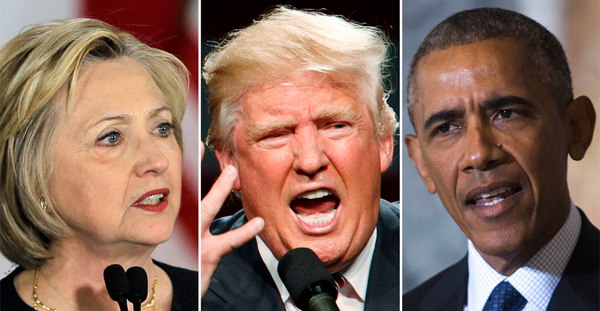How to talk like Trump

Much has been written about the oratory skills of President Obama, and for good reason – his speeches are authoritative, very well written and delivered impeccably. By contrast to date, President Elect Trump might appear to be somewhat lacking in comparison. But I’m not so sure, indeed I think “the Donald”, (as I feel still able to call him until he’s inaugurated), is actually the more effective communicator of the pair.
Try this test: how easy is it for you to recite a key passage from any speech President Obama has delivered in the last eight years? By contrast, what was Trump’s single message, repeated over and over again, during his election campaign? It might be unfair and untrue too, but I can’t look at Secretary Clinton without thinking “Crooked Hillary!”
There are three key parts to Trump’s speech making and I suggest that whilst the content might be risible and offensive in equal measure, the delivery is often highly effective and something many of us can learn from.
1. Know your audience’s biggest issue.
Many politicians, and for that matter business people too, make the fundamental mistake of trying to influence by persuading people with their ideas without knowing well enough what their audience currently thinks and feels about the issue. I believe that you cannot know your audience too well and yet so often people prescribe before they’ve properly diagnosed.
During the election campaign it was clear that Trump really knew both who his audiences are and what they currently think and feel. He made no attempt to appeal to the “political and intellectual elite” but instead addressed all his comments to “ordinary folk” who, clearly, have had enough of mainstream politics.
2. Craft a simple, compelling message.
If I was to find fault with President Obama’s speeches it would be that sometimes he tries to get a lot more into them than most people can digest at one sitting. Again, this is common in business presentations too. Trump on the other hand had one simple message – “my opponent is a crook”. He might have started out with “Make America Great Again” but quickly replaced this with attacks on Hillary Clinton and her allies, the establishment and the media. And my, wasn’t it repetitive and painful to watch? But the single message approach can be a lot more effective, both memorable and persuasive, than trying to communicate a dozen or more policy issues as Hillary Clinton attempted to do.
3. First change how they think and feel and they will change what they do.
It’s thinking and feeling that drives behaviour and action. All too often, communicators attempt to get people to change what they do without realising that first you need to change how people think and feel – and this requires knowledge of what they currently think and feel, and hence the importance of knowing your audience’s biggest issue. Trump’s speeches certainly evoked powerful feelings and consequently his message is all the more memorable.
Trump did these three things brilliantly well. He knew who his audience was and who it wasn’t. He didn’t try and communicate with everyone and hence his message wasn’t diluted. Most of all he knew how to stir up emotions. It’s going to be fascinating to see if he continues to communicate in this manner, but either way, you’d do well to consider adopting his communications style but please, have your own content.
If you have been sent this newsletter by a colleague and would like to register to receive the four-i Newsletters yourself, you can sign up here
Follow our social channels here: